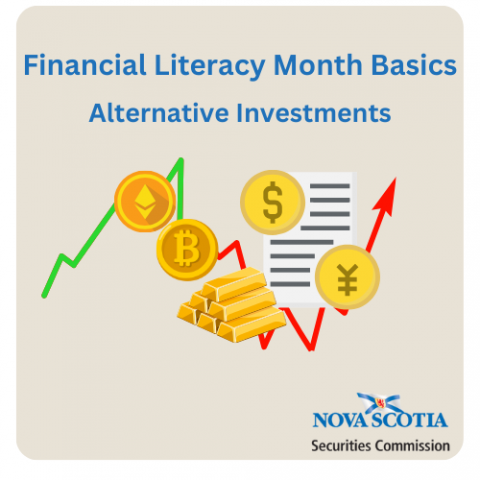Submitted by nsscadmin on

Our Financial Literacy Month blogs about investing basics conclude this week with a look at alternative investments. Investing in alternative investments has become more popular with novice investors despite the fact alternative investments carry higher risks compared to more common investments like ETFs, bonds, and GICs..
Some common alternative investments include derivatives (such as options), futures and forward contracts, foreign currencies, crypto assets, hedge funds, private credit and commodities like oil and gold.
Alternative investments are usually complex investments that require considerable knowledge or advice when being added to an investment portfolio. Some alterative investments can be highly volatile, making them even more risky.
Many alternative investments have the potential to deliver high returns, but they come with much higher risk and potential for very large, or even total, losses. Some alternative investment may also use leverage which can magnify any losses.
Before making any investment always make sure it fits your investment goals and risk tolerance. While investing for retirement is important, make sure you properly balance the investments you’re making and your risk to ensure it does not negatively affect your current standard of living and put you on the right path to reach your financial goals.
